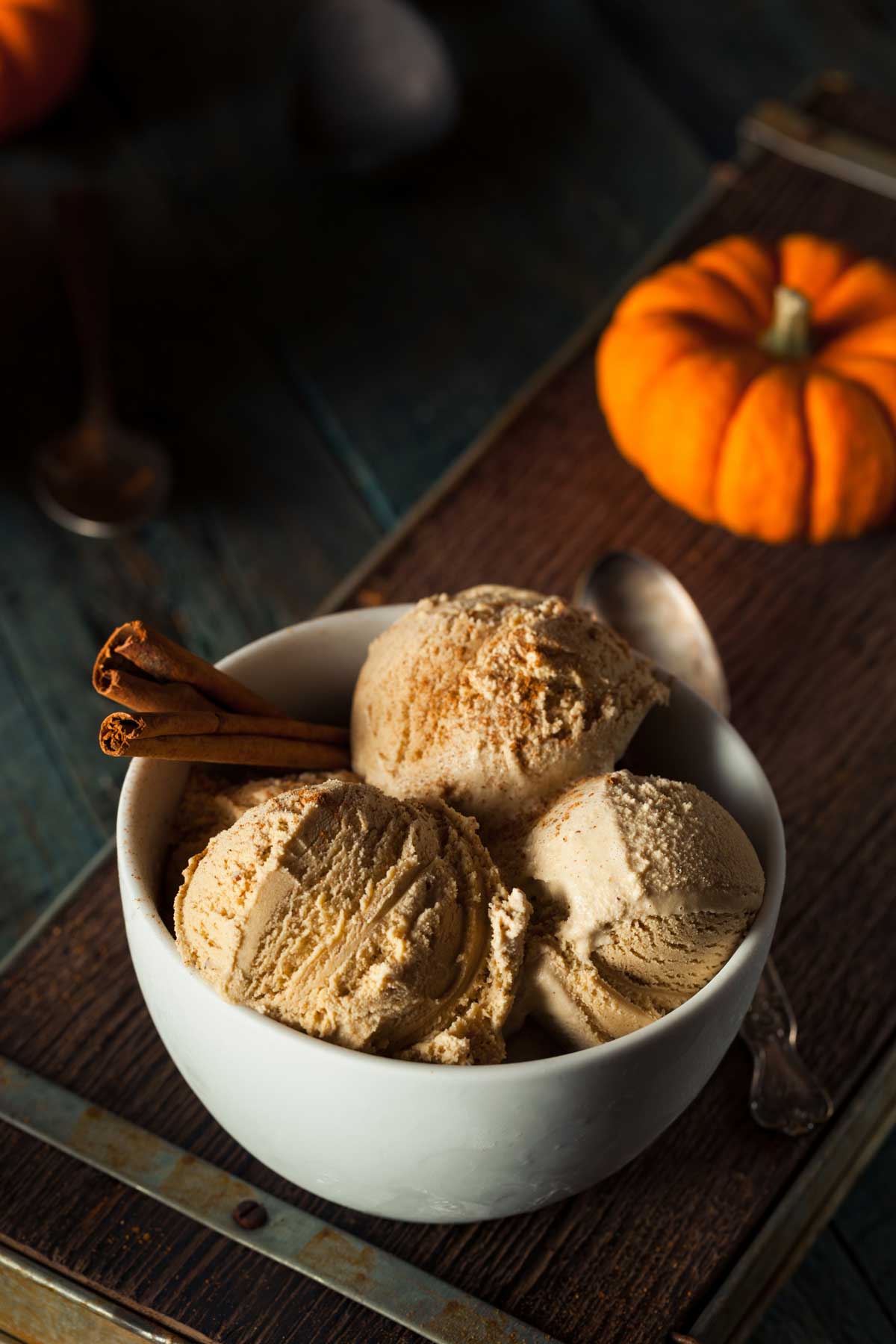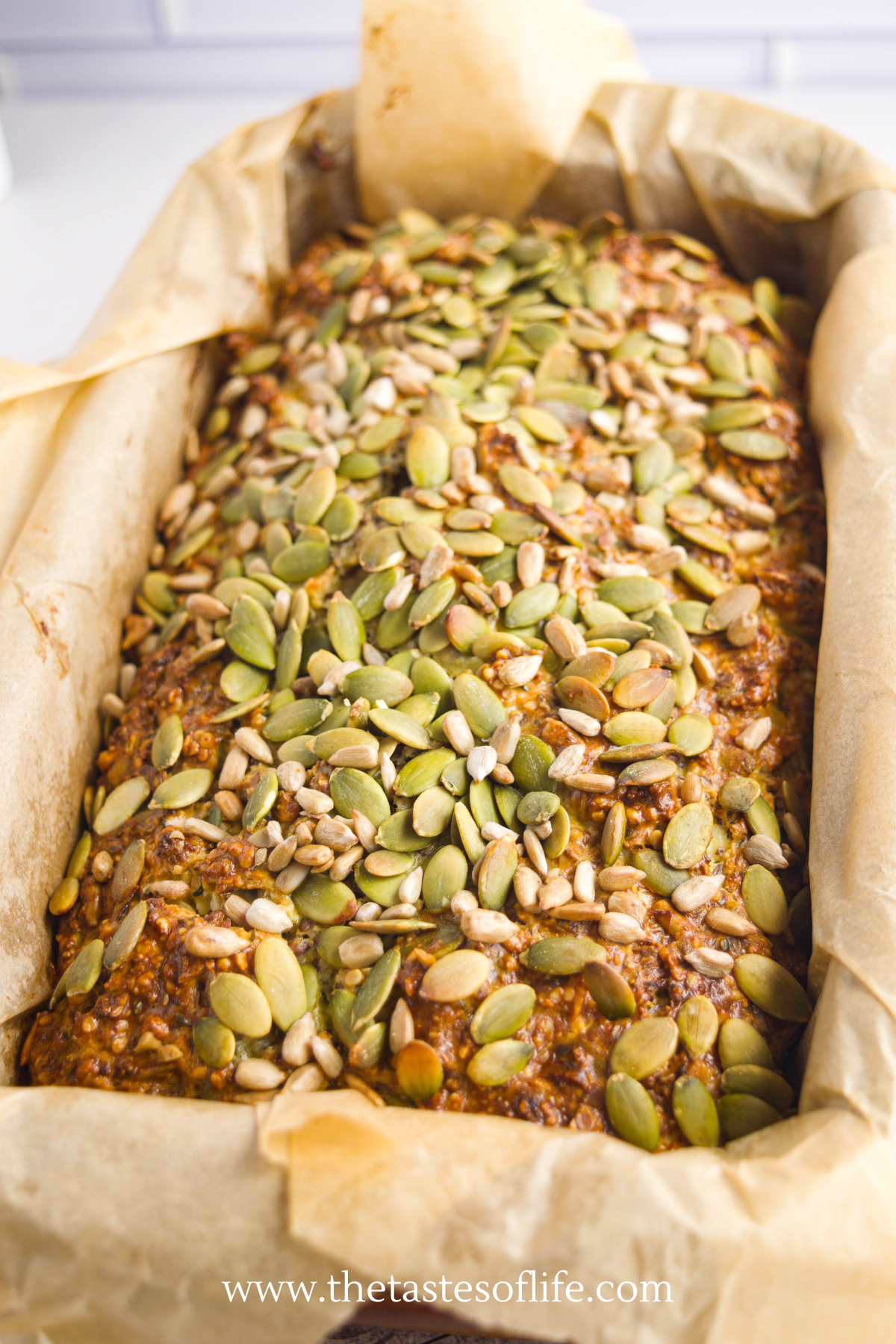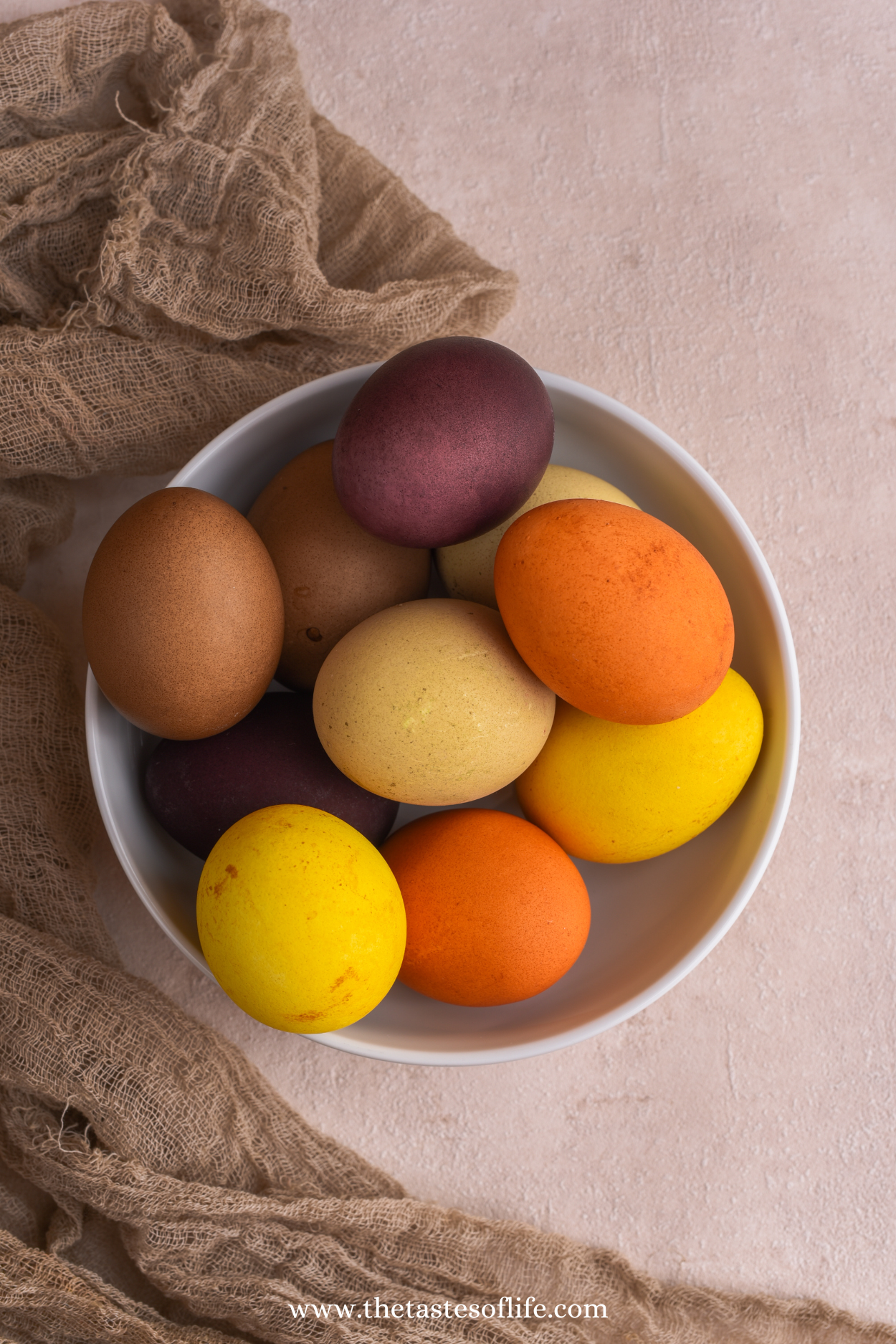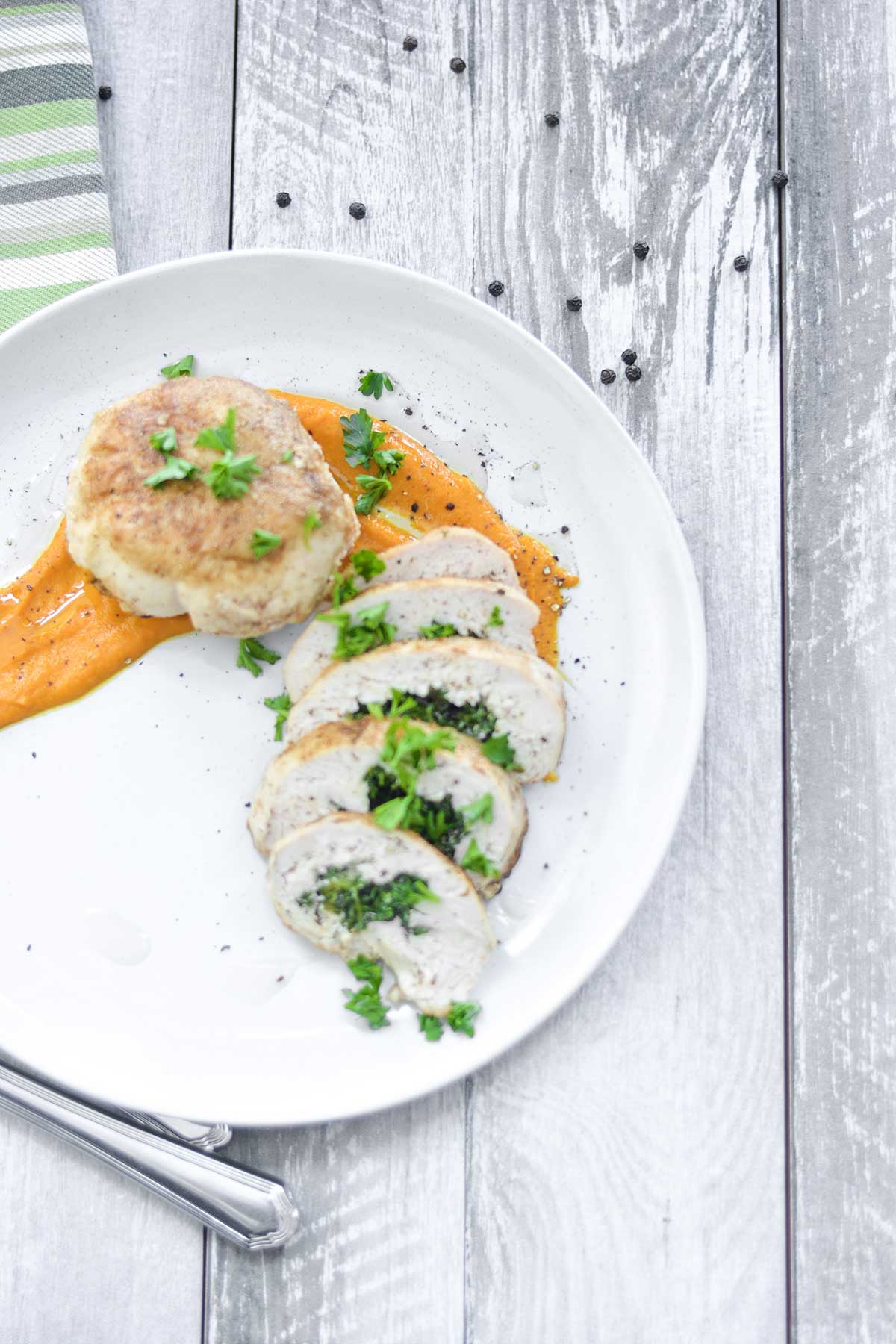A Step-by-Step Recipe Guide to Chimichurri Sauce
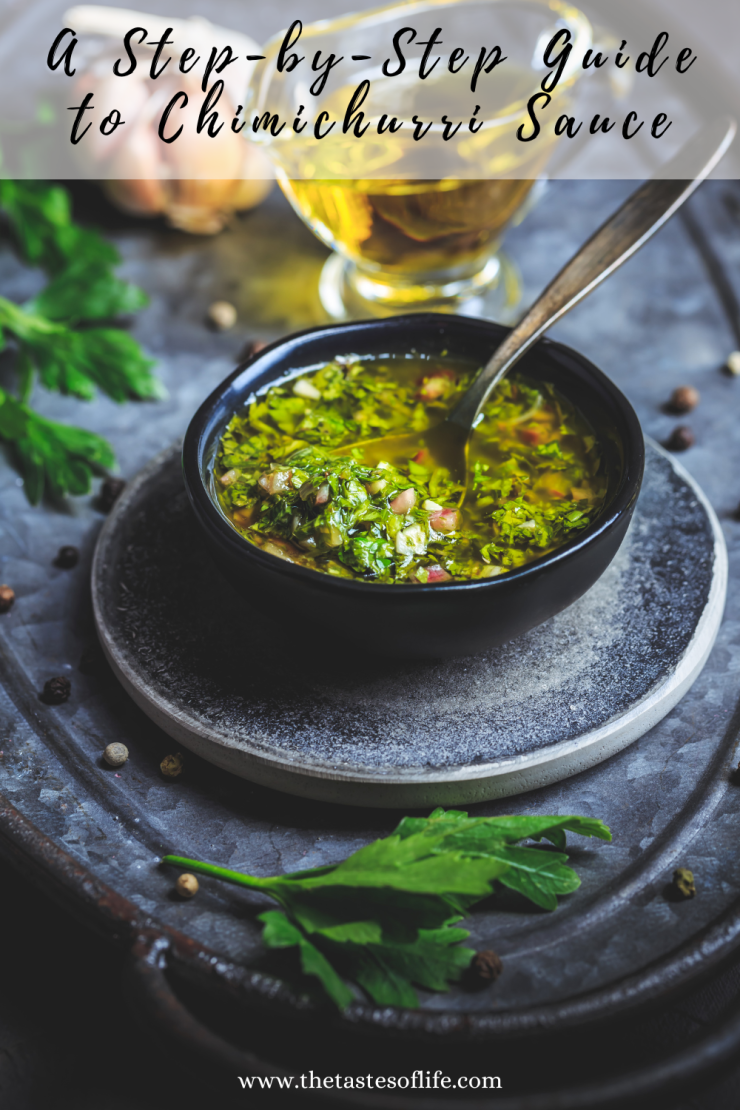
Unleashing the Flavors of Chimichurri Sauce: A Step-by-Step Recipe Guide
Chimichurri sauce is complex, vibrant, and bold. The fresh herbs, like parsley and oregano, add a green, earthy note to the sauce, while the garlic provides a pungent, slightly spicy flavor. The red pepper flakes give the sauce a subtle heat, which can be adjusted to your preference. The olive oil adds a fruity, nutty flavor that complements the herbs and spices, while the vinegar provides a tangy, acidic finish that balances the richness of the oil.
Chimichurri sauce is herbaceous, zesty, and full-bodied, with a bright acidity that cuts through the richness of grilled meats or roasted vegetables.
Have you ever tried chimichurri sauce? If not, you’re missing out on one of the most flavorful and versatile sauces out there! Chimichurri sauce is a delicious combination of fresh herbs, spices, garlic, and oil that originated in Argentina but has since become a favorite all over the world.
My first encounter with chimichurri sauce was during a family barbecue, where my cousin brought a bottle of homemade sauce that he had learned to make from his Argentinean friend. As soon as I tasted it, I was hooked. The flavors were so vibrant and intense, with just the right amount of heat and acidity to complement the smoky flavor of the grilled meats.
Since then, I’ve been experimenting with different recipes and variations of chimichurri sauce, trying to find the perfect blend of ingredients that suits my taste buds. And let me tell you, there’s nothing quite like a homemade chimichurri sauce that’s been tailored to your own preferences.
One of the things I love about chimichurri sauce is its simplicity. It’s made with just a handful of ingredients that are easy to find and inexpensive to buy. The main components of chimichurri sauce are parsley, oregano, garlic, red pepper flakes, olive oil, and vinegar. Some recipes also call for additional herbs like thyme or rosemary, and others include lemon juice or lime juice for added freshness.
The key to making a great chimichurri sauce is to use fresh ingredients and to chop them finely. This will help release their oils and flavors, making the sauce more aromatic and vibrant. I like to use a mortar and pestle to crush the garlic and herbs, as it creates a paste that’s easier to mix with the oil and vinegar. But if you don’t have a mortar and pestle, you can also use a food processor or a blender.
When it comes to the oil, I prefer to use extra-virgin olive oil, as it has a fruity flavor that complements the herbs and spices. But you can also use other types of oil like avocado oil, depending on your preference. As for the vinegar, red wine vinegar is the most common choice, but you can also use white wine vinegar, apple cider vinegar, or even balsamic vinegar if you want a sweeter and more complex flavor.
One of the great things about chimichurri sauce is that it can be used in so many different ways. Of course, it’s a classic accompaniment to grilled meats like steak, chicken, and pork, but it can also be used as a marinade or a dipping sauce. I love to drizzle it over roasted vegetables like carrots, sweet potatoes, and zucchini or to mix it with cooked quinoa or brown rice for a healthy and flavorful side dish.

History of Chimichurri Sauce
Chimichurri sauce is a beloved condiment in Argentina and Uruguay, and its origins can be traced back to the 19th century. While there are several stories about the origin of chimichurri sauce, one of the most widely accepted is that it was created by Argentine gauchos (cowboys), who would use the sauce to flavor and tenderize their meat.
The gauchos were known for their expertise in cooking meats over an open flame, and chimichurri sauce was a simple and flavorful way to enhance the flavor of the meat. It was made with ingredients that were readily available on the pampas, including fresh herbs like parsley and oregano, garlic, oil, and vinegar.
The name “chimichurri” is believed to be derived from the Basque word “tximitxurri,” which means “a mixture of several things in no particular order.” The Basque people were known for their influence on Argentinean cuisine, and it’s possible that the gauchos adopted the term to describe their sauce.
Over time, chimichurri sauce became a staple in Argentinean cuisine, and different regions developed their own variations of the sauce. Some regions would add additional herbs like rosemary or thyme, while others would use different types of vinegar or oil.
Today, chimichurri sauce is enjoyed not only in Argentina and Uruguay but also around the world. Its fresh, bold flavor and versatility make it a popular condiment for grilled meats, roasted vegetables, and even sandwiches. Whether you prefer it mild or spicy, traditional or with a modern twist, chimichurri sauce is a flavorful addition to any meal.
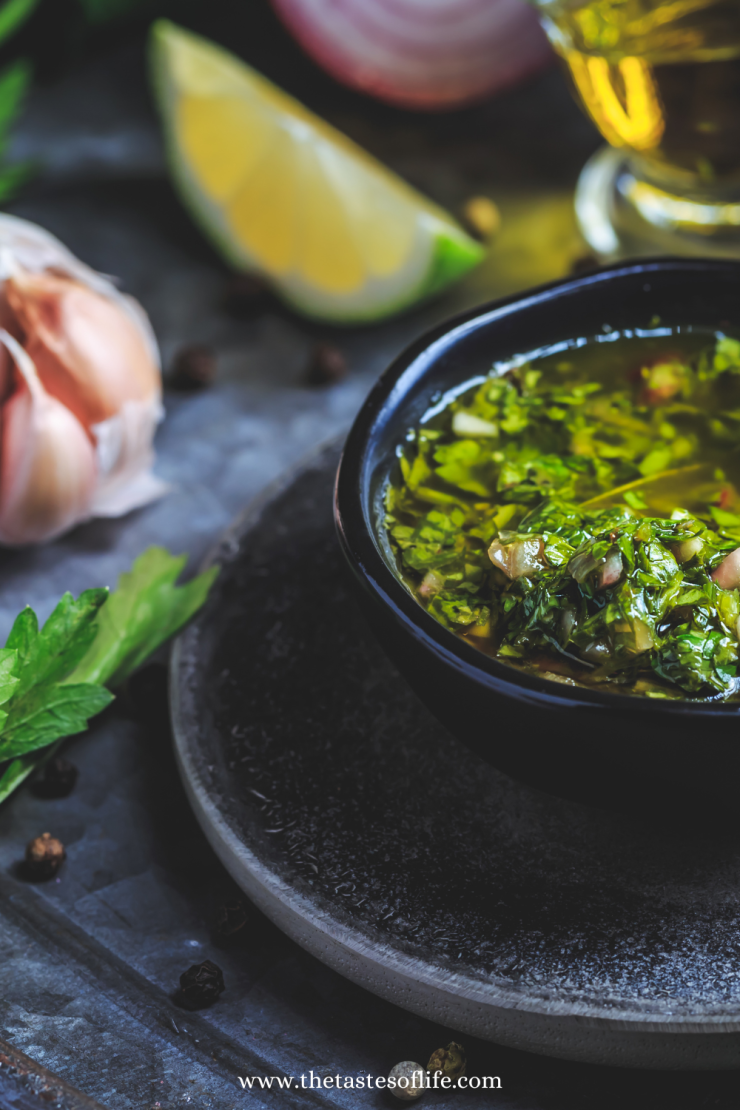
Health Benefits of Chimichurri Sauce
Fresh herbs and garlic are packed with antioxidants and anti-inflammatory compounds that can help boost your immune system and reduce your risk of chronic diseases. Olive oil is also a great source of healthy fats, while vinegar can help improve digestion and control blood sugar levels.
But enough about the science – let’s talk about the taste! Chimichurri sauce is one of those foods that just makes you want to eat more. The aroma of the herbs and garlic is so enticing, and the combination of flavors is just perfect. The tangy vinegar and the spicy red pepper flakes
Ingredients for Chimichurri Sauce
Here are the ingredients you’ll need:
- Fresh parsley
- Fresh oregano
- Garlic
- Red pepper flakes
- Extra-virgin olive oil
- Red wine vinegar
Optional ingredients:
- Fresh thyme or rosemary
- Lemon or lime juice
You can find these ingredients at your local grocery store or farmer’s market. Make sure to choose fresh herbs and garlic for the best flavor. Happy shopping and cooking!

How to Make Chimichurri Sauce
- In a medium bowl, mix together the chopped parsley, oregano, minced garlic, and red pepper flakes.
- Add the olive oil and red wine vinegar to the bowl, and mix well until everything is well combined. The mixture should be a vibrant green color.
- Taste the sauce and adjust the seasoning as needed, adding salt and black pepper to taste.
- Let the sauce sit at room temperature for at least 10 minutes to allow the flavors to meld together. You can also refrigerate the sauce in an airtight container for up to 1 week.
- Serve the chimichurri sauce alongside grilled meats, and roasted vegetables, or use it as a marinade for chicken, fish, or steak.
Optional Variations
- Add a squeeze of fresh lemon or lime juice for a bright, citrusy flavor.
- Use fresh thyme or rosemary in addition to parsley and oregano for a more herbaceous flavor.
- Adjust the heat level by adding more or less red pepper flakes.
Equipment:
- Cutting board and sharp knife: You’ll need to chop the fresh herbs and garlic, so a cutting board and sharp knife are essential.
- Mixing bowl: A medium-sized mixing bowl is ideal for combining all the ingredients for the sauce.
- Measuring spoons: You’ll need measuring spoons to measure out the olive oil, vinegar, and seasonings.
- Whisk or fork: A whisk or fork can be used to combine the ingredients for the sauce.
- Food processor or blender (optional): If you want a smoother consistency for your chimichurri sauce, you can use a food processor or blender to puree the ingredients. However, this is not necessary, and you can achieve a great texture by hand-chopping the herbs and garlic.
How to Store it and Reheat
Chimichurri sauce can be stored in an airtight container in the refrigerator for up to a week. The olive oil in the sauce will solidify in the fridge, so it’s normal to see a layer of solidified oil on top of the sauce. Before using the sauce, simply let it sit at room temperature for a few minutes and then stir to combine.
To reheat chimichurri sauce, it’s best to bring it to room temperature and then warm it gently on the stove or in the microwave. Be careful not to overheat the sauce, as this can cause the herbs to lose their freshness and flavor.
It’s important to note that chimichurri sauce is best served fresh, as the herbs and garlic will lose their potency over time. If you have a leftover sauce that you don’t think you’ll use within a week, you can freeze it in an airtight container for up to 3 months. To thaw the sauce, simply transfer it to the refrigerator and let it thaw overnight.
Did you Make this Recipe?
Please let me know how it turned out for you! Leave a comment below and share a picture on Instagram with the hashtag #thetastesoflifeholisticblog
More Condiment Recipes

Chimichurri Sauce
Ingredients
- 1 cup parsley fresh, chopped
- 1/2 cup cilantro fresh, chopped
- 4 cloves garlic minced
- 1/2 tsp red pepper you can use less
- 1/2 cup olive oil extra virgin
- 1/4 cup red wine vinegar
- salt to taste
Instructions
- Add all the ingrediencies to a blender and pulse to mince.
In the Bowl Method
- In a medium bowl, mix together the chopped parsley, cilantro, minced garlic, onion, and red pepper flakes.Add the olive oil and red wine vinegar to the bowl, and mix well until everything is well combined. The mixture should be a vibrant green color.Taste the sauce and adjust the seasoning as needed, adding salt and black pepper to taste.Letthe sauce sit at room temperature for at least 10 minutes to allow the flavorsto meld together. You can also refrigerate the sauce in an airtight containerfor up to 1 week.Serve the chimichurri sauce alongside grilled meats,roasted vegetables, or use it as a marinade for chicken, fish, or steak.
Variations
- Add a squeeze of fresh lemon or lime juice for a bright, citrusy flavor. Use fresh thyme or rosemary in addition to parsley and oregano for a more herbaceous flavor. Adjust the heat level by adding more or less red pepper flakes.

